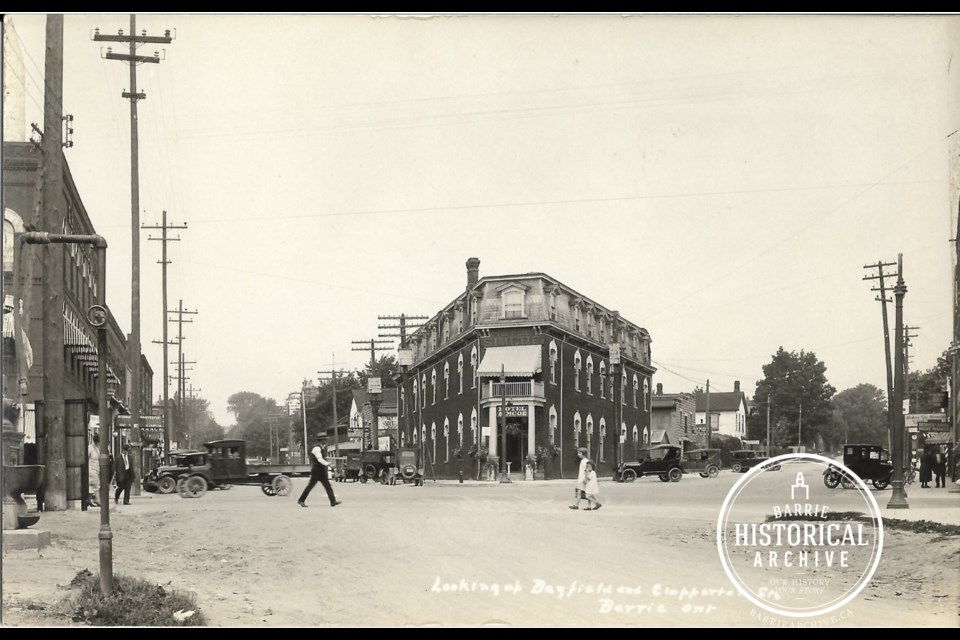Editor's note: The following is part one of a two-part series. Part two will be published next Saturday.
The house at 86 John St., in Barrie, is situated in a row of tiny homes just west of Innisfil Street. In years past, these were the homes of working men and their families. As the Allandale Station was a short walk to the south, many of these men were railway workers.
In the 1920s, this quiet corner of Barrie was made up of the usual demographic of the time, people of Scottish, Irish and English ancestry. Number 86, however, was home to a railway family by the name of Thompson who had very different roots.
John Allan Thompson was a Black man.
John Thompson’s people were associated with the land near the African Methodist Episcopalian Church in Oro Township. His ancestors had come to this area after the War of 1812.
A militia known as Runchey’s Company of Coloured Men, a corps of Black soldiers, was a mix of free and enslaved African Americans. Several of them, the Thompsons included, obtained land in Oro Township after their war service.
Over time, most of the Black people of Oro migrated elsewhere and a few found their way to Barrie. I have found nothing to suggest that the Thompsons were unwelcome in their neighbourhood ... not until early 1924, anyway.
In the years leading up to this time, Pentecostalism, a branch of evangelical Christianity, had been spreading across the continent from its roots in Kansas and Missouri. John Thompson became a firm believer in the Pentecostal ways and soon began holding raucous revival meetings in his home.
That is when the police became involved. Several neighbours, all of whom stated that they had the utmost respect for Thompson, were moved to involve the authorities when the prayer meetings kept getting louder and wilder.
Some had approached Thompson after hearing shouting and “groaning as if someone was being murdered,” to which he replied that “there is always shouting when the power of God falls upon us.”
The police had no idea what kind of charge might apply to this situation. Taking good Christian people to court for worshipping too loudly was not something they were used to doing, nor wished to do. They settled on the charge of vagrancy as there were many people not associated with the address present.
Now it was the police court’s turn to feel awkward about the case. Magistrate Jeffs was very uncomfortable with presiding over this unusual case. He found his out.
Jeffs dismissed the vagrancy charge and stated that the correct course of action should have been the civil filing of an injunction based on a nuisance complaint.
Inspired by the practices of the local Salvation Army, John Thompson took his meetings to the streets of Barrie after that. Outdoors, there was plenty of space to gather a much larger crowd of believers, and to annoy many more people, as it turned out.
If the Salvation Army could hold their brand of religious services at the Five Points intersection, so could he and his Pentecostal followers.
John Thompson’s believers came from Barrie, but also from as far away as Toronto. Their loud and enthusiastic style of worship attracted many onlookers to these open-air meetings. Singing, shouting, acts of divine healing and speaking in tongues created quite a spectacle.
Soon, the crowds were spilling onto the streets, blocking automobile traffic and congesting the sidewalks.
Warning after warning was issued by Police Chief Stewart. Finally, in the summer of 1927, as holiday traffic tried to wind its way through the streets of Barrie, the chief made his move.
When the resulting fiasco landed in front of a judge, it attracted an unusual amount of interest from within the community.
At the exact same time, the courthouse was the scene of a massive criminal trial which involved cattle-rustling, an accidental dynamite death and a murder. Yet, it was the Thompson case that saw a courtroom packed to the windows.
Each week, the Barrie Historical Archive provides BarrieToday



